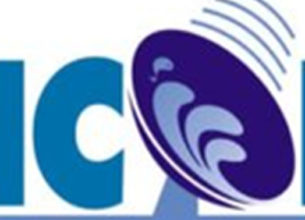Barren Island Volcano
21, Nov 2022

Prelims level : Geography
Mains level : GS-I Indian Geography
Why in News?
- INCOIS keeps watch on Barren Island volcano in Andaman & Nicobar Islands.
Highlights:
- The volcano on the Barren Island of the Andaman & Nicobar Islands is being closely watched to check for signs of an eruption which could lead to a tsunami or undersea landslide.
- The monitoring is being carried out by the Indian National Centre for Ocean Information Services (INCOIS), which houses the Indian Tsunami Early Warning Centre (ITEWC) in the Island.
- The volcano has been emitting smoke and is not capable of causing major destruction as per the scientists at INCOIS.
- INCOIS has seven tide gauges in the Indian Ocean and there are plans to put a seismic sensor and another tide gauge to catch any movement generated underwater.
- Recent tsunamis, including in Tonga,Tongan archipelago in the southern Pacific Ocean, have brought to the fore the challenge of tsunamis triggered by non-earthquake sources such as submarine landslides and volcanic eruptions which can wash away the regions near the source within a few minutes.
- INCOIS is aiming to address this lack of awareness and preparedness by local communities and officials leading to slow responsiveness.
Tsunami in Indian Ocean:
- Tsunamis can travel from 800 kmph in the deep ocean and about 30 kmph near the shore, with wave heights ranging from less than a metre to nine metres when they reach the shoreline.
- Scientists at INCOIS have calculated that it would take a magnitude of more than 6.5 on the Richter scale for a ‘tsunamigenic’ earthquake occurring in the Indian Ocean to hit the Indian coast, with travel time being 20 to 30 minutes to reach the A&N islands and two or three hours to hit the mainland.
- On India’s west coast, off the Arabian Sea, Tsunami could emerge from the Makran region and take two or three hours to reach the Gujarat coast.
Indian Tsunami Early Warning System:
- The Indian Tsunami Early Warning Centre (ITEWC) established at Indian National Centre for Ocean Information Sciences, (INCOIS), Hyderabad, under Ministry of Earth Sciences is the national authority to issue tsunami advisories for India since 2007.
- It is an integrated effort of different organisations including the Department of Space (DOS), Department of Science and Technology (DST), the Council of Scientific and Industrial Research (CSIR), Survey of India (SOI) and National Institute of Ocean Technology (NIOT).
- The ITEWC functions as an approved Tsunami Service Provider of the Indian Ocean Tsunami Warning & Mitigation System (IOTWMS) that is an integral part of the Global Tsunami Warning and Mitigation System, established and coordinated by the Intergovernmental Oceanographic Commission (IOC) of UNESCO.
- The ITEWS system consists of a real-time network of seismic stations, tidal gauges, and a tsunami warning centre that operates around-the-clock to monitor tsunamis, detect earthquakes that could cause them, and alert vulnerable areas in a timely manner.
- ITEWC keeps vigil for unusual happenings on the sea to give advance warnings to 25 countries apart from India.
- Whenever an earthquake of more than 6.5 on the Richter scale occurs within the Indian Ocean (or above 8 on the Richter scale in other regions), timely and accurate tsunami bulletins are generated.







